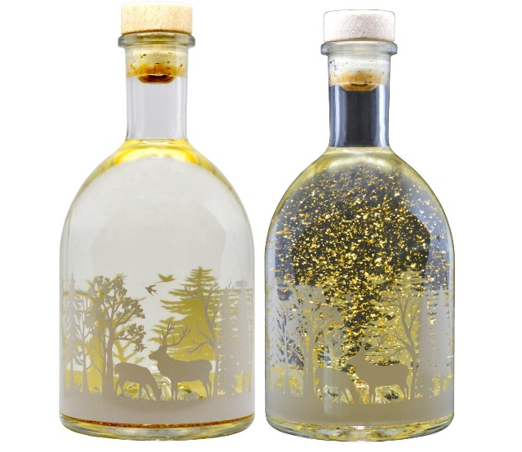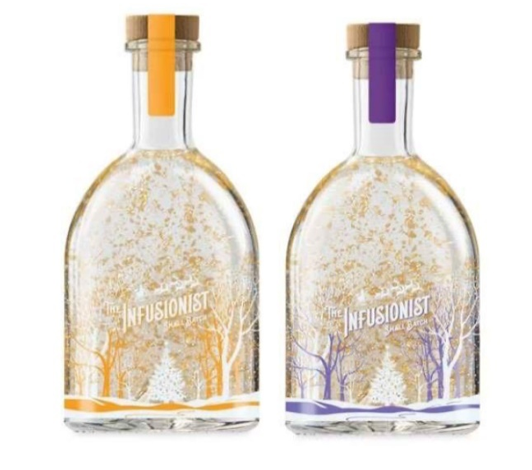UK Court of Appeal Upholds Design Infringement Ruling Against Aldi
Light at the end of the bottle for M&S

In a positive decision for design owners hoping to protect their product against lookalike competitors, the Court of Appeal of England and Wales has upheld a finding of design infringement against Aldi concerning its gin-based flavoured liqueur product range. Our Intellectual Property team examines the facts of surrounding the initial claim and explores the likely impact of the decision for future infringement disputes.
The Court of Appeal of England and Wales has delivered its widely anticipated judgment in a design infringement dispute between Marks and Spencer (M&S) and Aldi. Aldi appealed a decision of the Intellectual Property Enterprise Court (IPEC) finding that Aldi had infringed four registered designs, which protect an M&S Christmas product range.
Background
The M&S design rights protect a Christmas product range which consists of gin-based flavoured liqueurs sold in a festively decorated bottle. The bottles contain edible gold flakes which become suspended in the liquid when the bottle is shaken, thereby producing an appearance akin to that of a golden snow globe.
The relevant design rights, filed in April 2021, are UK Registered Designs Nos. 6134278, 6134280, 6134282 and 6134284 (the M&S Designs), two of which can be seen below.

While the design images are photos of the product, the M&S Designs protect the features of the product i.e. the lines, contours, colours, shape, texture, materials and/or ornamentation.
Aldi launched a rival gin-based flavoured liqueur product range in November 2021. This was sold in a decorated bottle containing gold flakes with an integrated LED lighting feature, as illustrated below.

Specific design features
Among the seven grounds of appeal was the question of whether IPEC was mistaken in finding that the M&S Designs showed an integrated light feature. Aldi argued that the Judge had been wrong to conclude that the images were created against a dark background showcasing a light feature. Instead Aldi argued that the design depicted a dark coloured bottle and/or dark coloured liquid. The Court of Appeal, having reviewed the images in detail, held that features such as shimmer on the neck of the bottle and illuminated flakes did suggest an internal source of illumination.
The overall impression
The Court of Appeal then moved on to review IPEC’s assessment of infringement and, in particular, whether the Aldi products created a different overall impression on the consumer of spirits and liqueurs.
Some features which were noted as being in common between the M&S Designs and the Aldi products were:
- The identical shape of the two bottles
- The identical shape of the two stoppers
- A wintery scene with tree silhouettes
- A snow effect, and
- An integrated light
In terms of differences, it was noted that the M&S wintery scene featured a stag and a doe whereas the Aldi products featured trees only and was ‘brighter and busier’. The Aldi bottle also had the ‘Infusionist’ branding and ‘watch’ strap label with the Aldi logo on top, which did not form part of the M&S Designs. These differences were ultimately deemed to be of relatively minor detail and the Court of Appeal agreed with IPEC’s assessment that the Aldi products created a similar overall impression to the M&S Designs.
Grace period for design applications
In order for a design registration to be valid the design must be new i.e. it must not have been made available to the public before the date of filing the application. However, to allow designers to test the market before applying for a design right, they are afforded a grace period of one year during which disclosures of the design in the public domain will not impact the novelty of that design. In this case, M&S had disclosed other variants of the designs within the grace period before deciding which variation to register. Aldi argued that this disclosure could be disregarded for the purposes of determining whether the design registration was valid but should not be disregarded when considering the issue of infringement. The Court of Appeal rejected this argument. It found that the purpose of the grace period would be substantially defeated if disclosures by the designer during the grace period were relevant when considering infringement.
Conclusion
This decision is encouraging for owners of design rights, which are often overlooked in favour of other intellectual property rights such as trade marks. Product packaging can be protected by both trade mark and designs rights. This decision of the Court of Appeal provides food for thought on the value of design registration in product protection. This is particularly interesting when compared to the recent IPEC trade mark decision, which found that a trade mark protecting the get up of the drink product, Thatchers Lemon Cider was not infringed by an Aldi ‘copycat’ product.
For more information on ensuring your design rights are adequately protected when going to market, contact a member of our Intellectual Property team.
The content of this article is provided for information purposes only and does not constitute legal or other advice.
People also ask
What is design infringement? |
Design infringement occurs when an act is done in relation to a design without the consent of the design owner. For example, the manufacture, sale or importation of a product which incorporates a registered design without the consent of the owner would be considered design infringement. |
What can be protected by design rights? |
A design right covers the appearance of the whole or a part of a product. It covers features such as lines, contours, colour, shape, texture, the material of the product or its ornamentation. |
How do I apply for a design right? |
Design rights can be applied for through national, European and International intellectual property offices. Our IP Team includes a number of registered design attorneys who would be happy to assist you in deciding on and filing the appropriate design protection for your product. |
Share this:

Gerard Kelly SC
Partner, Head of Intellectual Property Law, Co-Head of Dispute Resolution
+353 86 820 8066 gkelly@mhc.ie
